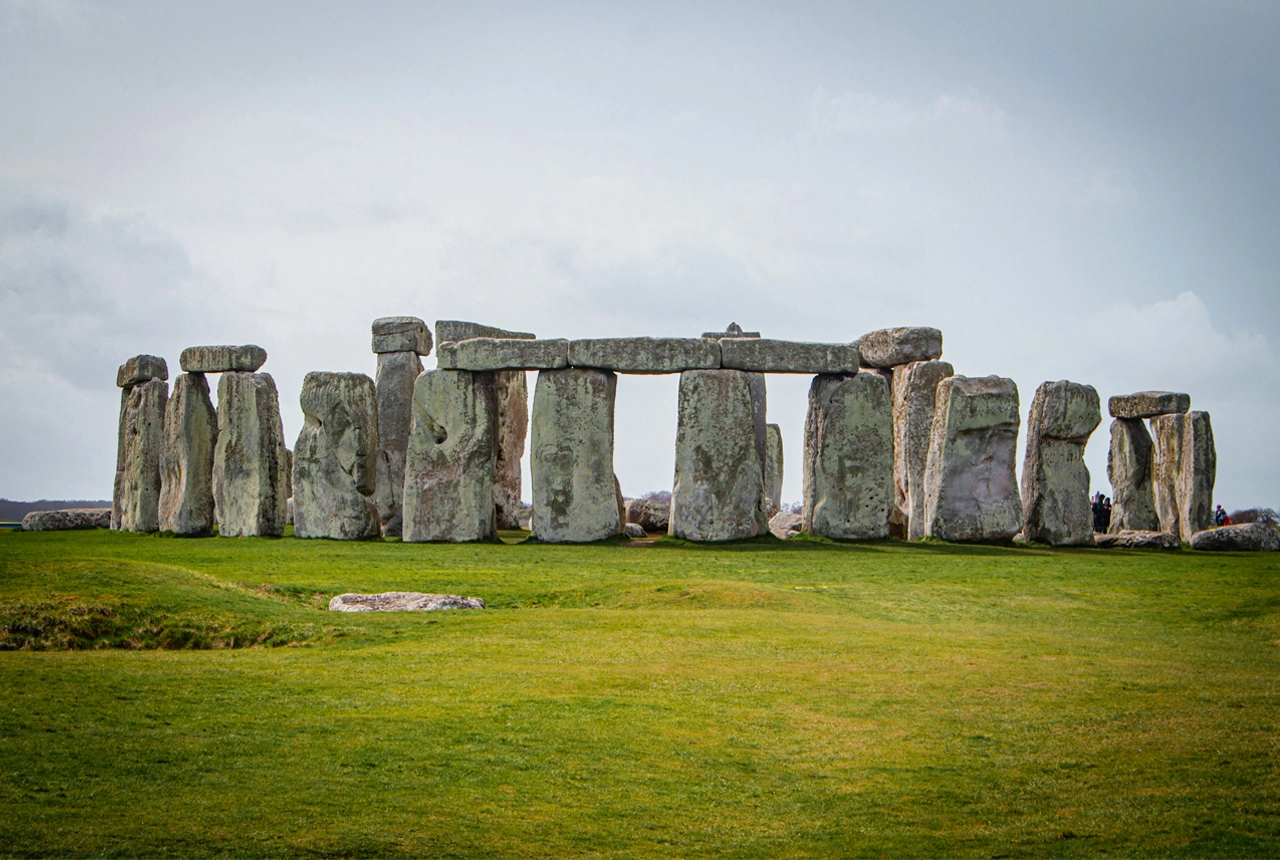The mysteries of Stonehenge have baffled scientists for centuries. In the 2010s, archaeologists and geologists identified two quarries in Wales as the sources of Stonehenge’s legendary standing bluestones. Now, new evidence published by scientists in August 2025 consolidates this connection.
A century ago, in 1924, archaeologists discovered a cow’s jawbone that had been carefully placed beside Stonehenge’s south entrance and dated it to the monument’s very beginning in 2995 to 2900 BCE. The discovery has intrigued historians ever since. Why had it been placed there? Why was this animal considered special? Researchers from BGS, Cardiff University and University College London have used isotope analysis to bring this artifact to life, helping to reveal further tantalising glimpses into the origins of the historic landmark.
The scientists sliced the cow’s third molar tooth, which records chemical signals from the animal’s second year of life, into nine horizontal sections. They were then able to measure carbon, oxygen, strontium and lead isotopes, which each offer clues about the cow’s diet, environment and movement.
A cattle third molar tooth. BGS © UKRI.
The oxygen isotopes revealed that the tooth captured roughly six months of growth, from winter to summer, whilst the carbon isotopes showed the animal’s diet changed with the seasons: woodland fodder in winter and open pasture in summer. Additionally, the strontium isotopes indicated the seasonal food sources came from different geological areas, suggesting that the cow either moved seasonally or that winter fodder was imported.
The lead isotopes revealed composition spikes during the late winter to spring, pointing to a lead source that was older than the lead in the rest of the tooth. The composition suggests the cow originated from an area with Palaeozoic rocks, such as the bluestones found in Wales, before moving to Stonehenge.
This is the first time that scientists have seen evidence linking cattle remains from Stonehenge to Wales, adding further weight to theories that cows were used in the transportation of the enormous rocks across the country.
This study has revealed unprecedented details of six months in a cow’s life, providing the first evidence of cattle movement from Wales as well as documenting dietary changes and life events that happened around 5000 years ago. A slice of one cow tooth has told us an extraordinary tale and, as new scientific tools emerge, we hope there is still more to learn from her long journey.
Prof Jane Evans, BGS Honorary Research Associate.
In addition to this discovery, researchers also concluded that the unusual lead signal could not be explained by local contamination or movement alone. Instead, there was another explanation: that lead stored in the cow’s bones had been remobilised during the stresses of pregnancy. If true, this would mean the cow was female and pregnant or nursing during the tooth’s formation. To test the hypothesis, the team applied a peptide-based sex determination technique at the University of Manchester, which showed there was a high probability that the animal was female.
This research has provided key new insights into the biography of this enigmatic cow whose remains were deposited in such an important location at a Stonehenge entrance. It provides unparalleled new detail on the distant origins of the animal and the arduous journey it was brought on. So often grand narratives dominate research on major archaeological sites, but this detailed biographical approach on a single animal provides a brand-new facet to the story of Stonehenge.
Richard Madgwick, professor of archaeological science at Cardiff University.
Stonehenge has many secrets left to be uncovered. However, this latest research helps fill in just a few more of those gaps as we learn more about this legendary landmark.
This is yet more fascinating evidence for Stonehenge’s link with south-west Wales, where its bluestones come from. It raises the tantalising possibility that cattle helped to haul the stones.
Michael Parker Pearson, professor of British later prehistory at University College London.
The research paper, Sequential multi-isotope sampling through a Bos taurus tooth from Stonehenge, to assess comparative sources and incorporation times of strontium and lead, is now available to read.


